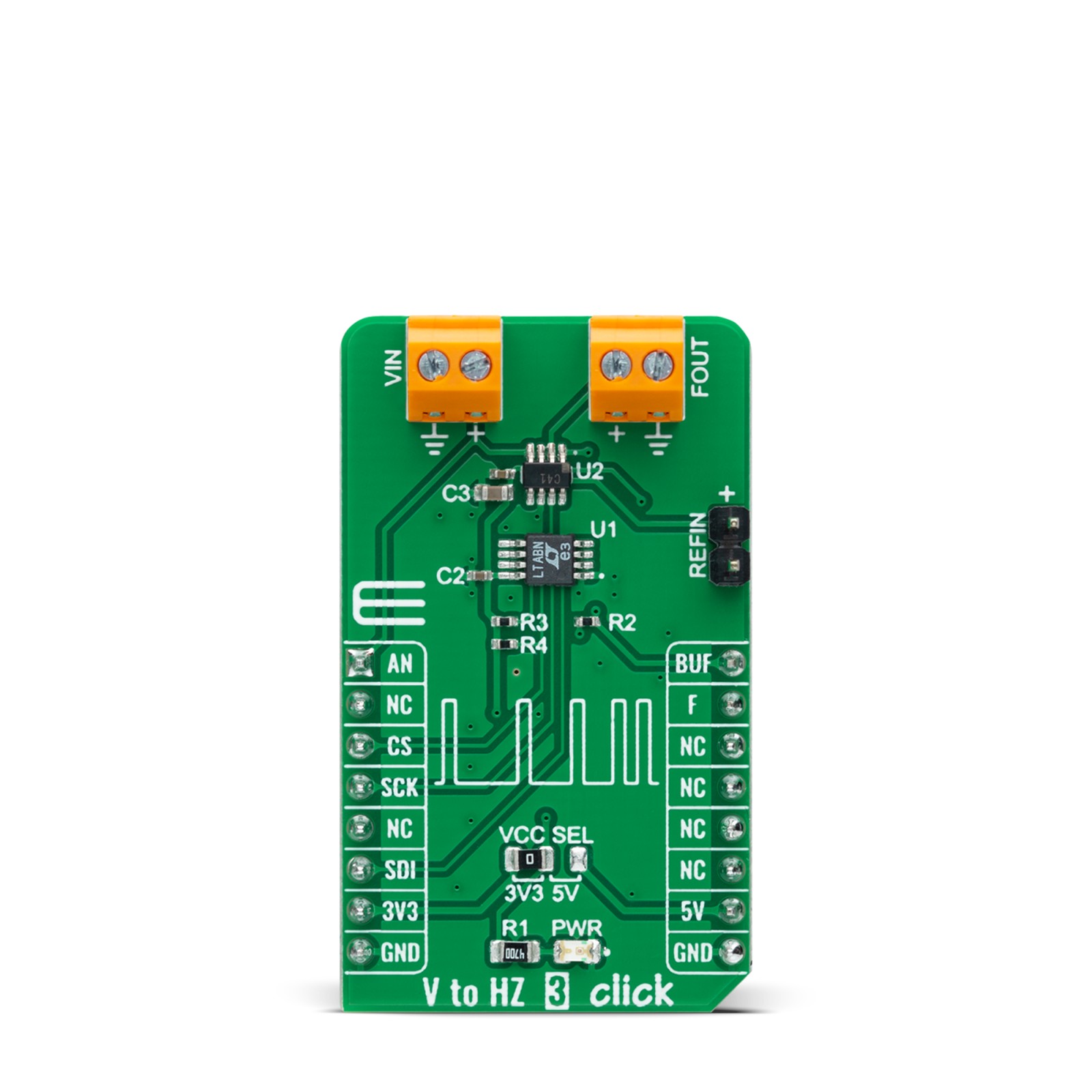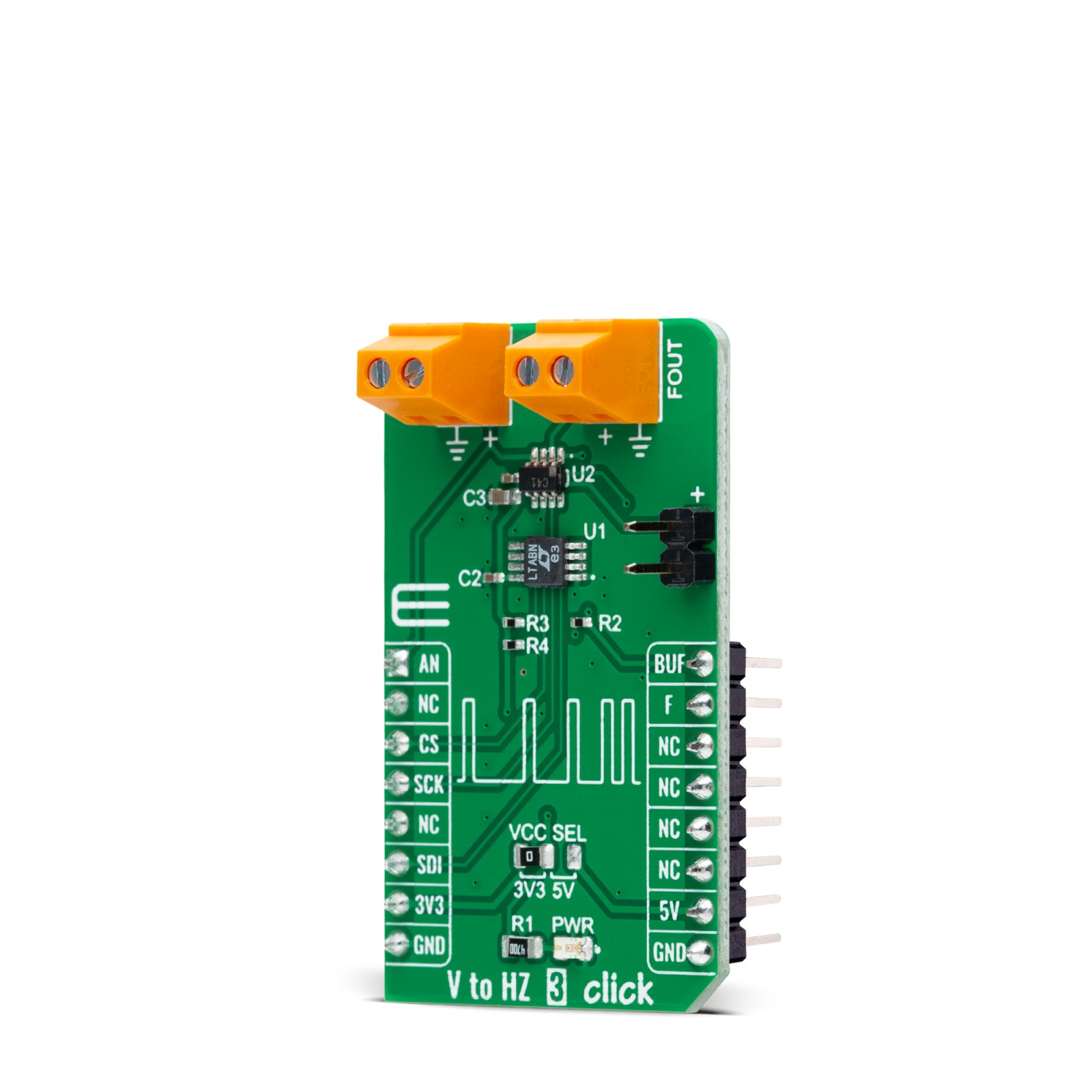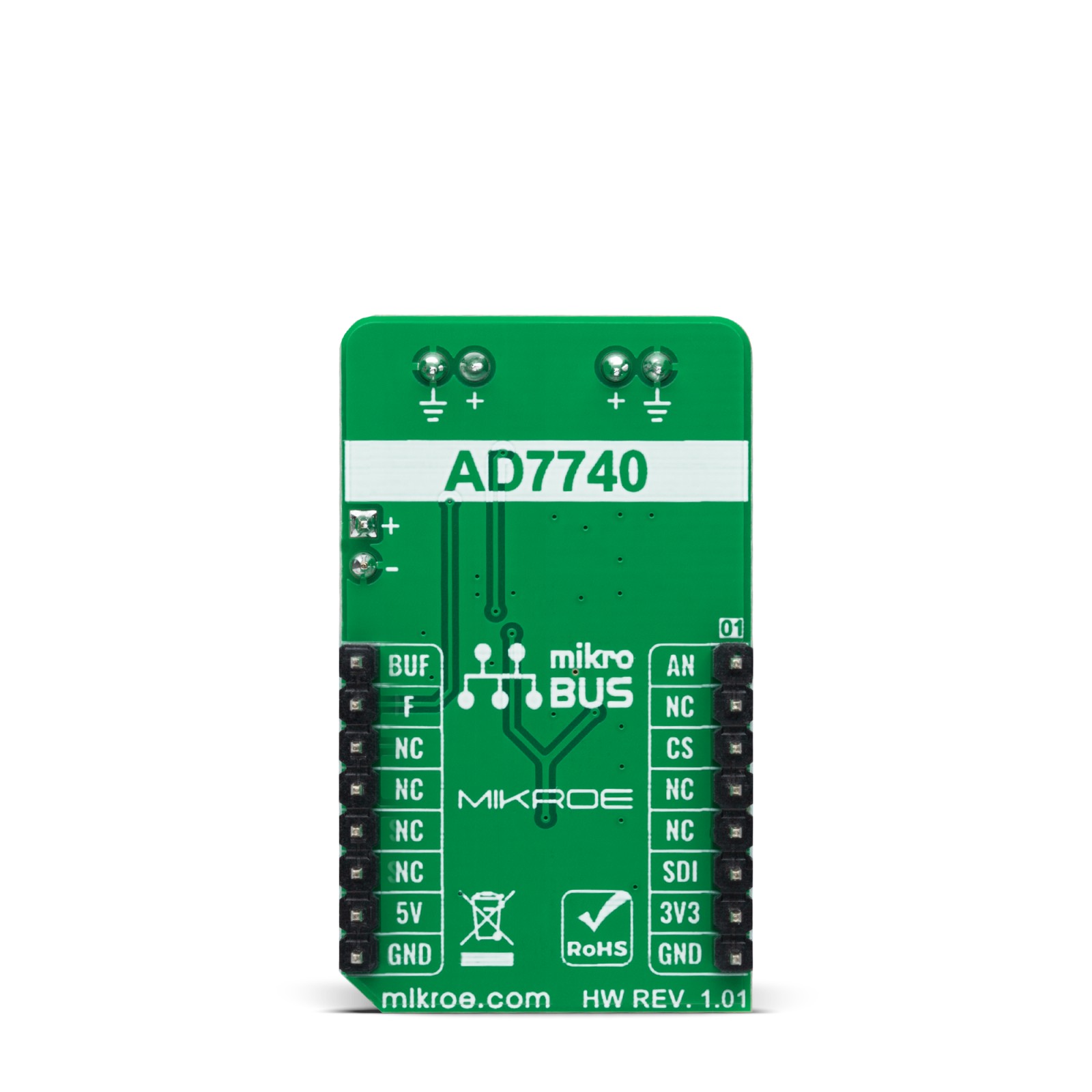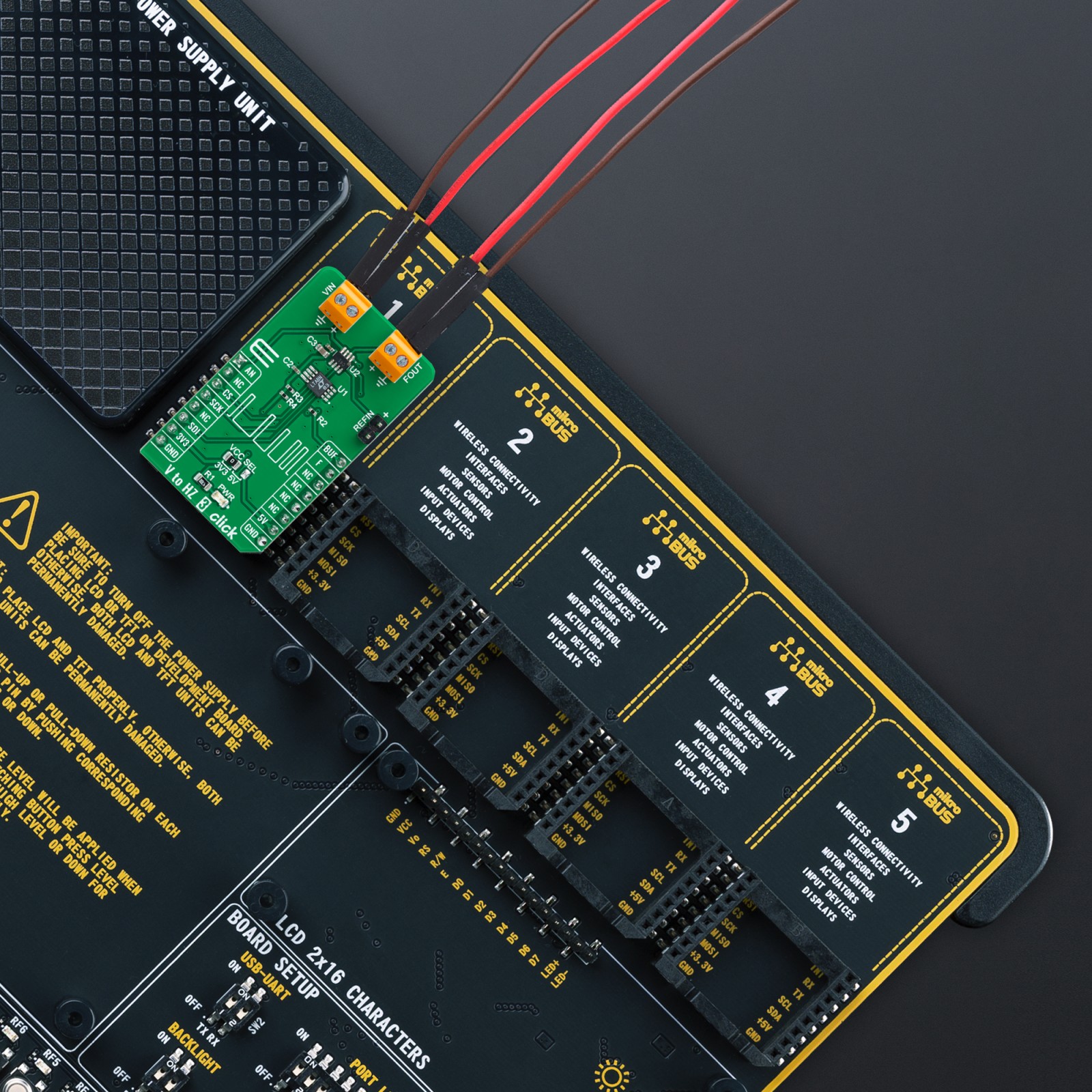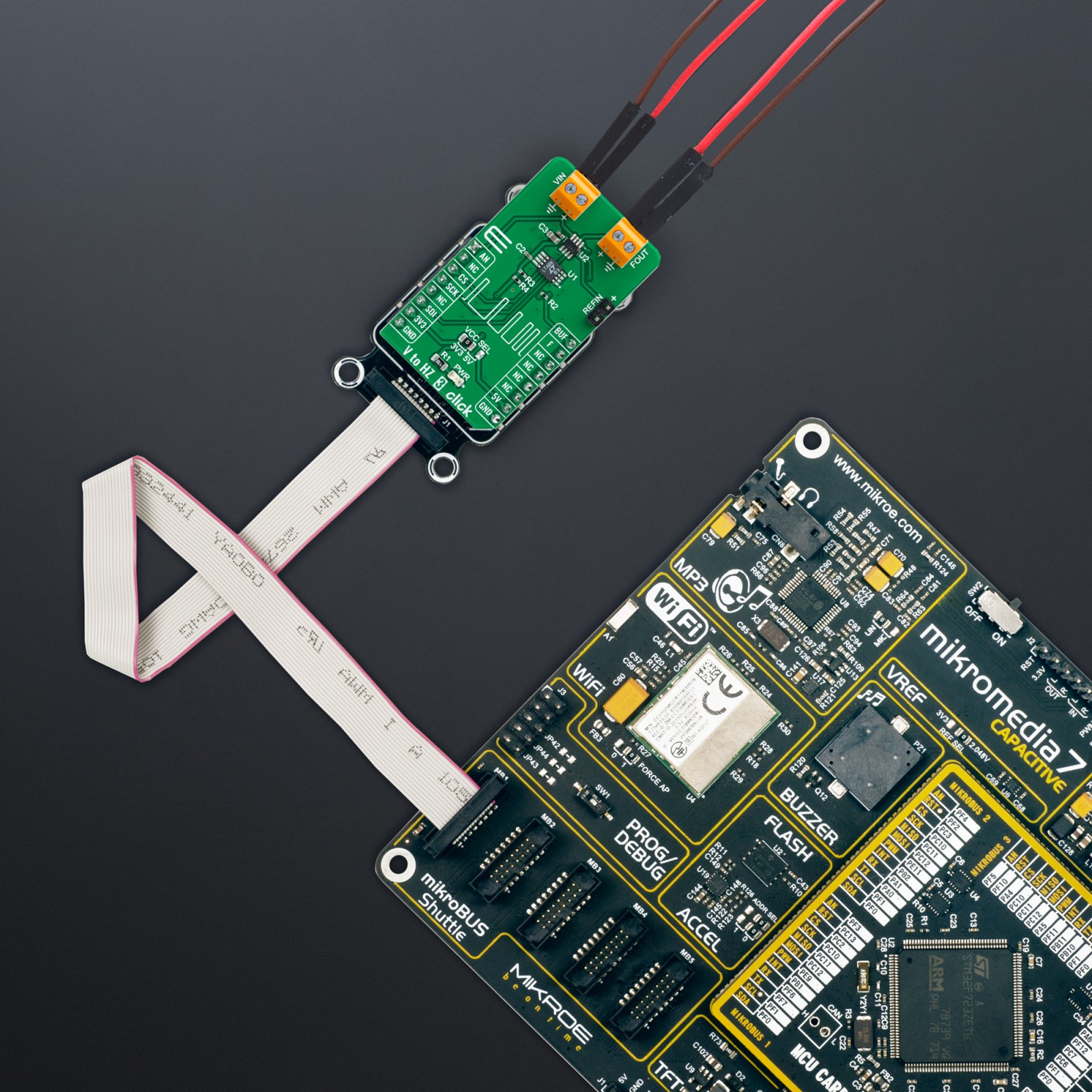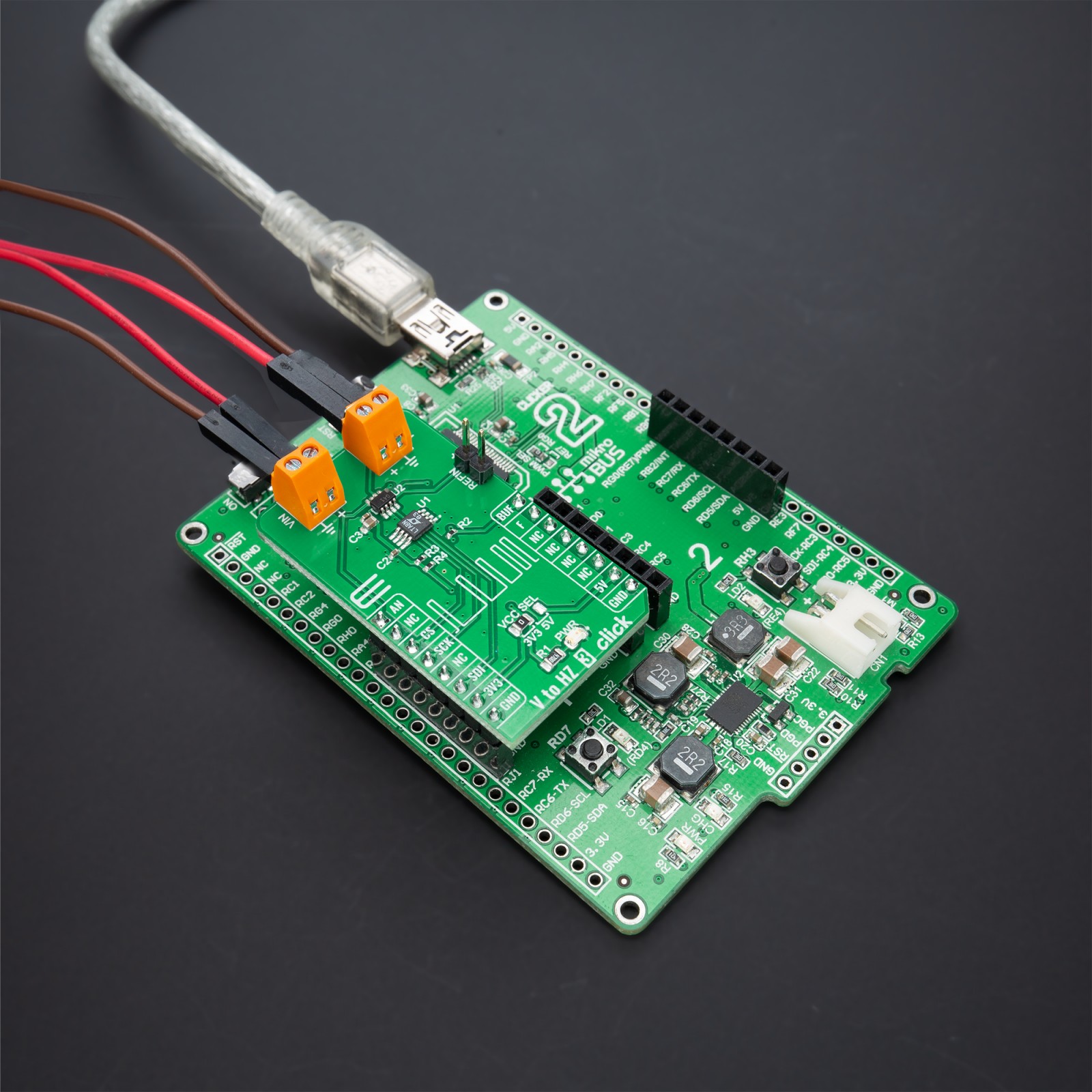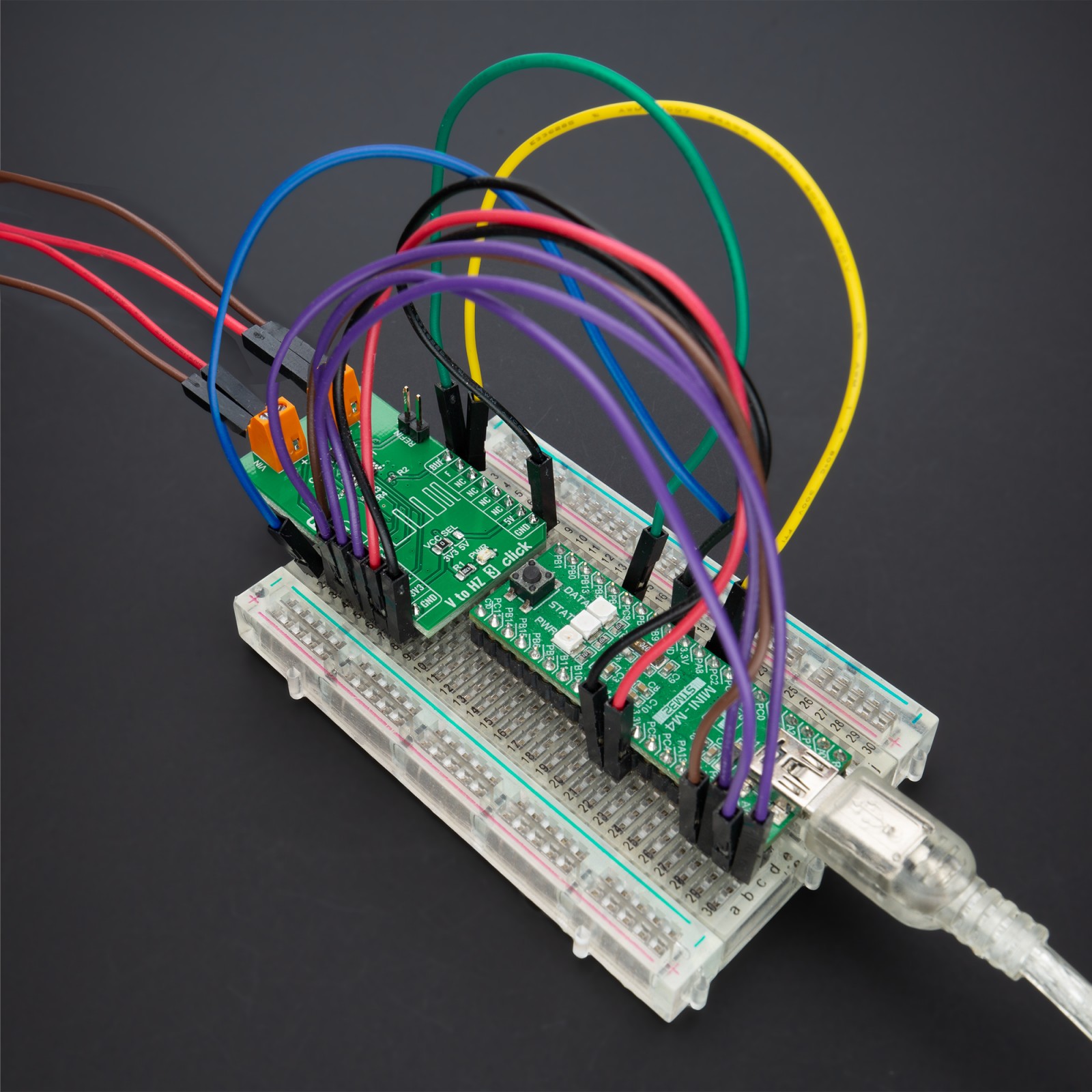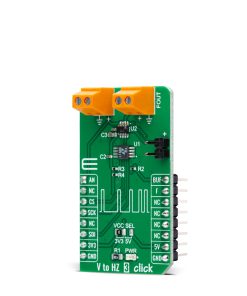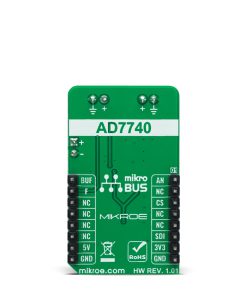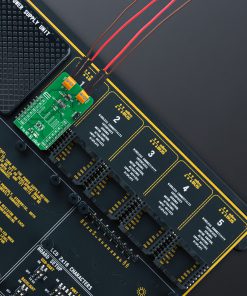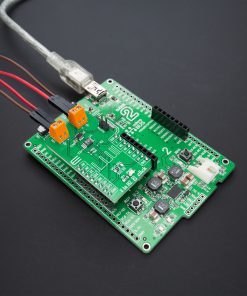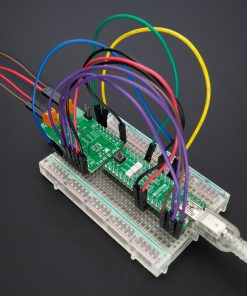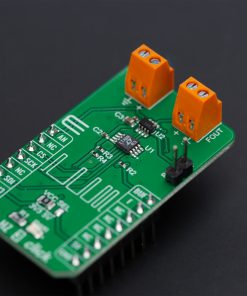V To Hz 3 Click
R460.00 ex. VAT
V to Hz 3 Click is a compact add-on board that converts an analog voltage input signal into a specific frequency pulse wave signal. This board features the AD7740, an ultrasmall synchronous voltage-to-frequency converter from Analog Devices. The AD7740 has a linear response, so applying a voltage from 3V up to 5V on its VIN terminal will generate the pulse with a frequency linearly proportional to the input voltage. It contains an integrated 2.5V bandgap reference defining the span of the VFC and can be overdriven using an external reference. The full-scale output frequency is synchronous with the input clock signal provided by the LTC6903 programmable oscillator, with a maximum input frequency of 1MHz. Based on the analog input value, the output frequency goes from 10% to 90% of the input frequency. This Click board™ is the most suitable for low-cost analog-to-digital conversion, linear frequency modulation, voltage-to-frequency conversion, and as a variable clock signal generator.
V to Hz 3 Click is supported by a mikroSDK compliant library, which includes functions that simplify software development. This Click board™ comes as a fully tested product, ready to be used on a system equipped with the mikroBUS™ socket.
Stock: Lead-time applicable.
| 5+ | R437.00 |
| 10+ | R414.00 |
| 15+ | R391.00 |
| 20+ | R376.28 |

